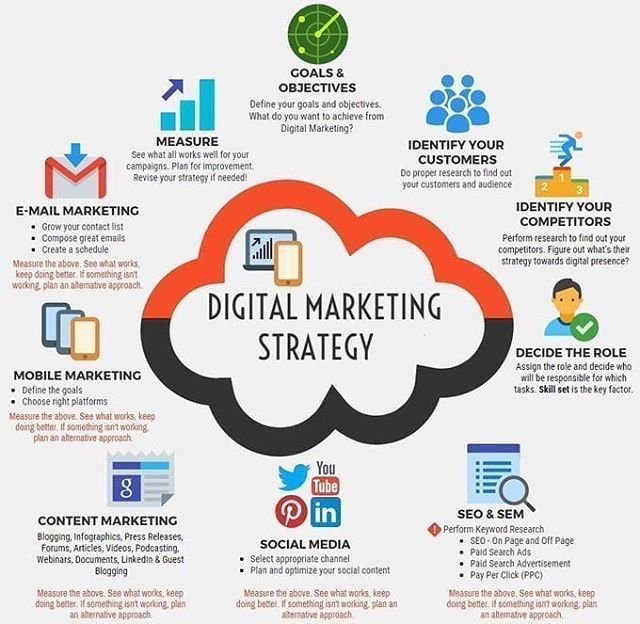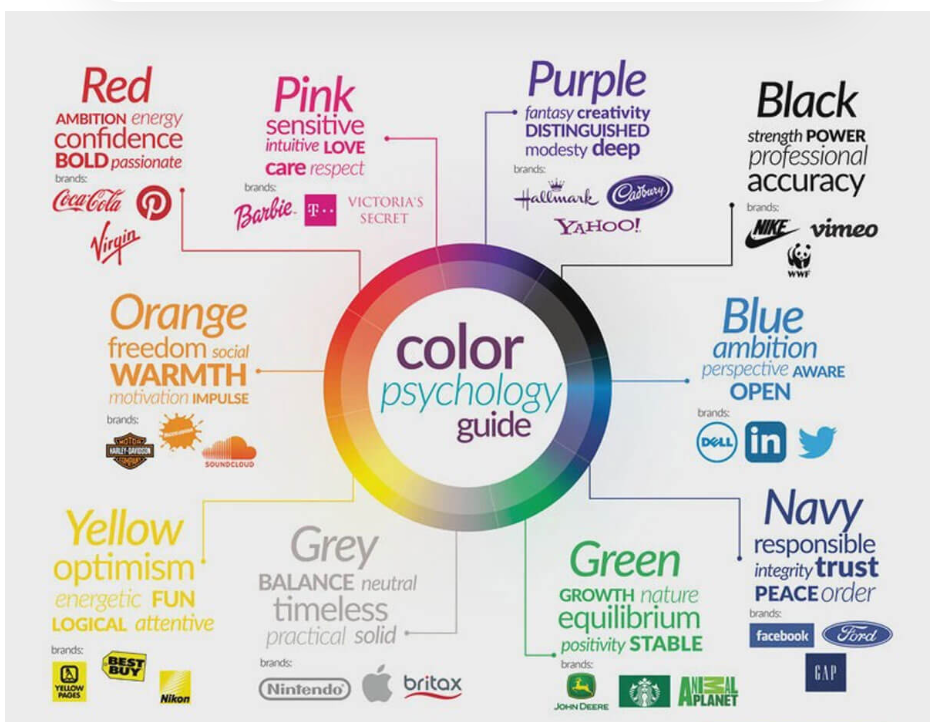In today’s highly competitive business environment, building a brand that stands out is not just a priority, it’s a necessity. A strong brand is more than just a logo or a tagline. It’s the entire experience your audience has when they interact with your business. It’s your company’s personality, values, and mission wrapped up into one memorable package.
Creating a lasting business identity involves much more than a quick branding exercise. It requires thought, strategy, creativity, and the ability to connect deeply with your audience. But how do you build a brand that not only captures attention but also remains relevant for years to come?
In this blog post, we’ll walk through the steps to building a strong, lasting brand, discussing the key elements that make a brand memorable and giving you actionable strategies to apply to your own business. Whether you’re just starting out or looking to revamp an existing brand, this guide will help you create a lasting impact.
1. What is a Brand? More Than Just a Logo
Before we dive into how to build a brand, let’s first define what a brand really is. Many people mistakenly think that a brand is just a logo, a color scheme, or a catchy slogan. While these elements are important, they are only part of the larger picture.
A brand is the collective perception of your business. It encompasses everything from the way you communicate with customers to the values your company stands for. It’s the feeling people get when they think about your company. Strong brands evoke emotions, create loyalty, and set expectations.
Think of some of the world’s most iconic brands—Apple, Nike, Coca-Cola. These companies have built powerful brands that go far beyond their products. Apple represents innovation and sleek design, Nike embodies athletic excellence and motivation, and Coca-Cola evokes feelings of happiness and shared moments.
A well-crafted brand tells a story that connects with people on a deeper level.

2. Defining Your Brand’s Core Values
Before you design a logo or come up with a tagline, you need to define your brand’s core values. These values are the guiding principles that shape every aspect of your business. They help your customers understand what you stand for and create a sense of alignment between your business and their personal beliefs.
To define your core values, ask yourself the following questions:
– What is the mission of your business?
– What do you want your customers to feel when they interact with your brand?
– How do you want to make a difference in your industry or community?
Your answers to these questions will form the foundation of your brand identity. For example, if your business is committed to sustainability, this value should be reflected in everything from your packaging choices to your marketing messages.
One excellent example of a company that has built its brand around core values is Patagonia. The outdoor clothing brand is deeply committed to environmental activism, and it shows in every aspect of their business—from the materials they use to the campaigns they run. Customers who care about the environment feel a strong sense of connection to Patagonia, not just because of the quality of their products, but because they believe in the company’s values.

3. Understanding Your Target Audience
A brand’s success is closely tied to its ability to resonate with its target audience. One of the biggest mistakes businesses make is trying to appeal to everyone. Instead, it’s essential to focus on a specific audience—those who will be the most interested in and loyal to your brand.
To understand your target audience, consider:
– Who are they (age, gender, interests, location, etc.)?
– What problems are they facing, and how can your product or service solve them?
– What values do they care about, and how can your brand align with those values?
For instance, let’s say your business is a high-end skincare line. Your target audience might be women aged 30-50 who are interested in luxury, self-care, and using products with natural ingredients. By understanding this, you can tailor your branding (from packaging to tone of voice) to speak directly to them. Your messaging would focus on quality, self-indulgence, and wellness, rather than affordability or convenience, which might appeal to a different demographic.
Knowing your audience also helps you decide how and where to communicate. Should you be focusing on Instagram and influencer partnerships? Or would LinkedIn and industry conferences be a better fit? The right channels can make a big difference in how effectively your brand message is delivered.

4. Crafting Your Brand Story
People love stories. In fact, storytelling is one of the most powerful tools you can use to build a brand. A well-crafted brand story humanizes your business, allowing customers to connect with you on a personal level.
Your brand story should answer these questions:
– Why did you start your business?
– What problem were you trying to solve?
– What obstacles did you overcome along the way?
– What makes your journey unique?
Sharing this story on your website, in interviews, and across social media can create an emotional connection with your audience. Remember, people are more likely to support a brand when they feel a personal connection to its mission and story.
Take the example of Warby Parker, the eyewear company. Their brand story revolves around providing affordable, stylish glasses while also giving back. For every pair of glasses sold, they donate a pair to someone in need. This simple yet compelling narrative has resonated with their audience and set them apart from other eyewear brands.
5. Visual Branding: Colors, Fonts, and Logo Design
Now that you’ve established your brand’s core values, target audience, and story, it’s time to create the visual elements of your brand. Your brand’s visual identity includes its colors, fonts, logo, and overall aesthetic. These elements should be consistent across all platforms, from your website to your packaging.
Here are some tips for creating your visual brand identity:
Colors: Choose a color palette that reflects your brand’s personality. For example, bright, bold colors might convey energy and fun, while muted, neutral tones suggest sophistication and luxury.
Fonts: Select fonts that are easy to read but also match your brand’s tone. For instance, a tech company might opt for modern, clean fonts, while a vintage clothing brand might use retro-inspired typefaces.
Logo: Your logo is often the first thing people associate with your brand, so it should be memorable, simple, and reflective of your values. You don’t need to reinvent the wheel—some of the most successful logos are incredibly simple (think of Nike’s swoosh or Apple’s apple).

6. Consistency is Key
One of the most important rules of branding is consistency. Once you’ve established your brand’s visual identity, messaging, and values, it’s essential to maintain that consistency across all platforms.
Your website, social media profiles, emails, and even how your employees interact with customers should all reflect the same brand personality. Consistency helps build trust with your audience. When people see the same logo, hear the same tone, and experience the same level of service, they feel more comfortable and confident in your business.
This also extends to product quality and customer service. A brand is not just about how you look and sound—it’s about how you deliver on your promises. Make sure that every interaction a customer has with your business aligns with the values and story you’ve crafted.

7. Evolving Your Brand Over Time
Even the strongest brands need to evolve. The market changes, customer preferences shift, and technology advances. That doesn’t mean you need to overhaul your entire brand every few years, but it’s important to stay relevant and open to making adjustments.
For example, Starbucks has gradually updated its logo over the years to reflect its modern, global presence while still retaining the core elements of its original brand. By making small, strategic adjustments, they’ve managed to stay current without losing their brand identity.
It’s also important to listen to your customers and get their feedback. Are their needs changing? Are there new competitors in your space? Periodic brand audits can help you stay on top of these shifts and ensure that your brand remains relevant in a
rapidly changing market.

Conclusion: Building a Brand That Lasts
Building a lasting brand is both an art and a science. It requires thoughtful strategy, creativity, and a deep understanding of your audience. But when done right, a strong brand can set you apart from competitors, create loyal customers, and position your business for long-term success.
Remember, a brand isn’t built overnight. It’s a continual process of refining, evolving, and staying true to your values. Whether you’re starting from scratch or rebranding an established business, the steps outlined in this post will help you create a brand identity that resonates with your audience and stands the test of time.
